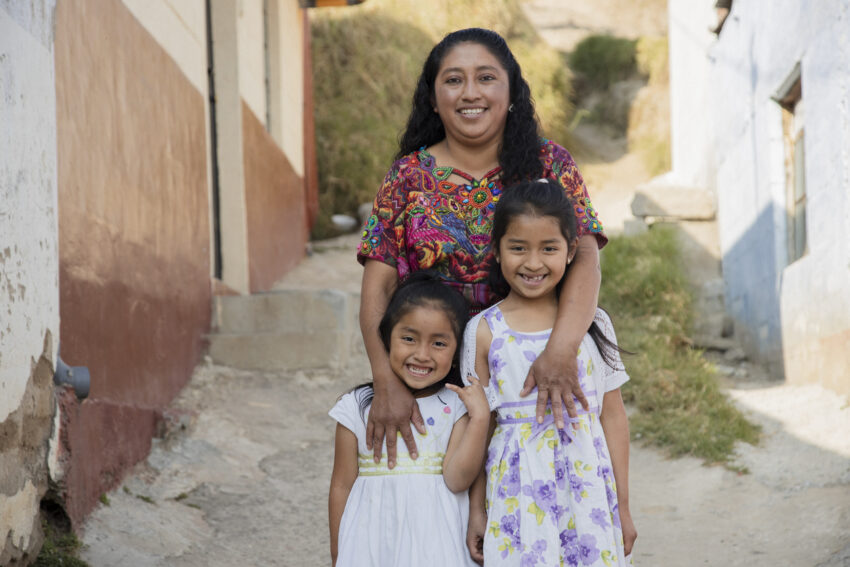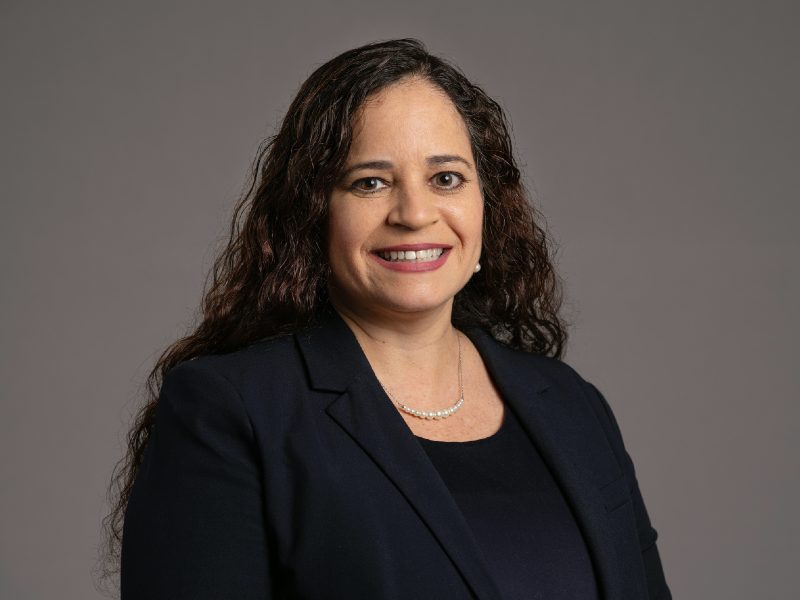
Share On Social!
This is part of the “Advancing the Science of Cancer in Latinos: 2022 Conference Proceedings,” which summarizes findings and discussions of the 2022 Advancing the Science of Cancer in Latinos Conference on Feb. 23-25, 2022, in San Antonio, Texas.
Addressing Systemic Inequities and Structural Racism to Advance Health Equity for Latinos
Dr. Marcella Nunez-Smith is an internal medicine physician, the Associate Dean for Health Equity Research at Yale School of Medicine, and the Associate Director for Community Outreach and Engagement at the Cancer Center. Dr. Nunez-Smith served as chair of the Presidential COVID-19 Health Equity Task Force, and is one of the nation’s foremost experts on disparities in healthcare access.
Health Disparities Affecting Marginalized Communities

Dr. Nunez-Smith spoke on health disparities affecting marginalized communities and communities of color, both in regard to the COVID-19 pandemic and beyond. The discussion began by emphasizing the impact of structural racism on health equity and overall patient care. The COVID-19 pandemic, although more challenging than anyone predicted, brought many such fundamental problems into public consciousness. This prompted important conversations, long overdue, addressing inequities in the structures and systems that affect individual and collective health. Throughout the pandemic, the burden of disease was found to be unequally distributed across populations, with infection rates, hospitalizations, and loss of life falling along familiar lines of social inequity. In order to combat this trend, the Presidential COVID-19 Health Equity Task Force prioritized equitable access to vaccinations, PPE, treatments, and testing.
Although COVID-19 brought such disparities to the forefront of public consciousness, inequity is rampant in many other areas, including cancer rates and survivorship in underserved and marginalized communities. Such disparities are rooted in spatial patterns of poverty, lack of access to nutritious food, environmental toxins, educational disadvantage, health literacy, and more. These social and structural drivers of health account for at least 60% of the variance in health outcomes, a much greater percentage than the pure effects of biological and genetic factors.
Communities of color are at a particular disadvantage in regard to living conditions that promote health, as well as access to affordable healthcare before and after illness. Despite recent research into understanding these trends, more knowledge is needed, especially in regard to how government policy and economics affect and exacerbate pervasive racism and health disparities. For example, nearly half of Latino workers report no paid time off of any kind. This lack of access to sick leave or vacation days disproportionately prevents access to life-saving cancer screening, treatment, and care.
Health is also compromised by general stress, and more research is needed in regard to overall health in communities that experience stressful living conditions. It is important to understand the mechanisms by which social determinants affect physiology. Dysregulation of physiological systems, epigenetic modifications, and immune and inflammatory responses have all been proposed as areas of research addressing the effects of chronic social stress.
Social Inequities and Impact on Cancer
In cancer specifically, the fact that upstream social inequities are responsible for disparities in risk, incidence, and outcome indicates the need to engage in policy outside of the healthcare system. Advocating for and implementing legislative strategies that counteract racism and inequity are paramount, ensuring that current and future policies do not have an adverse impact on marginalized communities.
Throughout the pandemic, the COVID-19 Health Equity Task Force found that communities themselves were the best resource of insight into their own needs. They began by engaging community leaders and working with individuals who had proven trustworthy to the community. Meeting people where they were was also important, and building mechanisms of community support empowered positive outcomes. By listening to and relying on generational wisdom, the task force observed health behavior changes, increased access to care, and the closing of many inequity gaps.
Dismantling Discrimination in Healthcare
Dr. Nunez-Smith ended by emphasizing that both patients and providers experience discrimination in healthcare, which disrupts the trust that is so fundamental to the patient-provider relationship. Currently, only 5.8% of practicing physicians identify as Latino, compared to 18% of the overall US population.
It is therefore important that healthcare professionals practice self-interrogation, acknowledging the structural racism in healthcare systems, and ensuring that instead, diversity and anti-racism are the norm. Furthermore, as the burden of cancer increases both for the Latino population and other communities of color, solutions that are proactive and anticipatory, and not merely reactionary, are needed.
Paying Respects and Con Respeto: Economic Considerations of Community-driven Interventions
Dr. Yamilé Molina is Associate Professor at Community Health Sciences at the University of Illinois Chicago (UIC), and Faculty Affiliate at the Center for Research on Women and Gender at UIC. Dr. Molina also serves as Associate Director of both Community Outreach and Engagement at University of Illinois Cancer Center.
A History of Breast Healthcare Interventions in US-Based Latinas

Dr. Molina discussed the power and value of community-driven interventions in breast healthcare, both updating information on previously used interventions, as well as sharing a new study empowering Latinas to obtain breast cancer screenings. Economic considerations for socially just and sustainable scalability were also addressed.
Since 1990 there have been more than 49 community-driven interventions addressing breast healthcare in the US, 25% of which targeted Latinas. Most of these interventions were focused on screening, but others were centered on diagnostic care and treatment as well. The success of these studies was driven by multi-layered community networks. Such networks are composed of community nonprofits, such as health and social services; community venues, such as churches and businesses; community media, such as radio and kiosks; and community members, such as family and friends. Interventions were conducted through cooperation between these community networks and academic-based staff, health workers, and community navigators.
A New Way to Increase Breast Cancer Screenings
Despite success with such previous interventions, questions remain regarding scalability and sustainability, especially when considering cost. In pursuit of these questions, a quasi-experimental pilot study was conducted, comparing two approaches for encouraging Latinas to obtain breast cancer screenings.1 The first approach, Educate, addressed participants’ breast cancer prevention and screening behavior. The second approach, Empower, addressed participants’ and their social networks’ breast cancer screening.1 Of participants in the Empower group, 72% received mammograms within 6 months of the intervention, while only 48% of the Educate group received mammograms.1 Furthermore, 41% of participants in the Empower group engaged more than seven family or friends, communicating the message about breast cancer. In contrast, only 20% of the Educate group did the same.1 Finally, 70% of the Empower participants communicated with a community member specifically about mammography, while only 48% of the Educate group did so.1 These results reveal the importance of focusing on individuals’ social networks as well as the individuals themselves when designing interventions.
The Challenges of Scaling
While community non-profits, venues, and media may be the most effective way to reach individuals in small numbers, scaling comes with several difficulties. First, these institutions typically have limited access to funding, prioritizing relationships over raising money. Also, they often do not know about systems such as the Data Universal Numbering System (DUNS), which would allow them to apply for or renew federal grants, or the indirect cost reimbursement process through which nonprofits receive compensation for qualified expenses when they provide services to governments using federal funds. Finally, they might not have the time or resources to wait for “net-30” or other payment schedules.
One possible solution to this difficulty in scalability is for the academic sector to step in, becoming employers, and giving a more robust infrastructure. However, academic investment in community staff can lead to less support of community non-profits themselves. Also, academic investment can result in competition, meaning fewer resources and benefits for community-based non-profit staff. Community-based staff could even be paid significantly less than academic-based staff for doing the same work. Other factors to consider when attempting to scale these interventions are that community health workers currently are underpaid and have to work multiple jobs, even paying for their supplies out of pocket. These disparities must be addressed and not forgotten in the excitement of large-scale endeavors. Certification and recertification can also be a concern when scaling interventions, since many community health workers have limited time, money, education, and language training for certification while working. Some may even be ineligible for certification and formal payment.
Dr. Molina concluded by expressing that the goal of any intervention, especially one that seeks to be scalable, is to increase inclusion, opportunity, and flexibility, while maintaining compensation and obligations to community health workers. There is momentum demonstrating the power of community-driven interventions, but socially just implementation requires consideration of the evidence as well as social context.
Reference
- Molina Y, San Miguel LG, Tamayo L, et al. Comparing different interventions’ effects on Latinas’ screening mammography attainment and participant-driven information diffusion. Health Educ Behav. 2021;48(6):818-830.
Two Tales, One Goal: Equity
Dr. Narjust Duma is a thoracic oncologist at the Lowe Center for Thoracic Oncology at the Dana-Farber Cancer Institute, and serves as Associate Director of the Cancer Care Equity Program at Dana-Farber, as well as Assistant Professor of Medicine at Harvard Medical School.
The Pervasive Nature of Subconscious Bias

Dr. Duma began by leading the audience through a visualization activity, challenging each listener’s biases and stereotypes. All people have unconscious biases, and, as evidenced by the tragedies of George Floyd, Breonna Taylor, Tamir Rice, Ahmaud Arbery, and others, these biases can be fatal. Unconscious biases – defined as negative associations that can lead people to see danger, underqualification, and faults where they do not exist – are also prevalent in healthcare, and almost always have negative consequences. Since stereotypes and unconscious biases are worse in times of high stress, the pandemic has exacerbated the problem even further.
Latinx patients, especially those who are uncomfortable discussing care in English, are often stereotyped as unintelligent and non-compliant. In a meta-analysis of 15 studies, 13 found that healthcare professionals showed statistically significant moderate levels of bias against people of color. These physicians were shown to be less likely to provide appropriate treatment for pain and blood clot events. Another study found that women of color were less likely to receive a follow-up call after breast cancer treatment. Further, in a review of the last 14 years of oncological research, a decline was seen in the recruitment of minorities and women in clinical trials.
Several strategies could help reverse this trend of underrepresentation in clinical trials. First, inclusion/exclusion criteria need to be examined for unconscious bias. Next, target accrual goals could ensure that minorities are accurately represented, and the FDA should not approve medications that have not been tested in populations that mirror US demographics. Cost and coverage barriers to participation should also be addressed. Most importantly, however, physicians need to ask people of color to participate, practicing cultural humility, and not assuming that participation will be too difficult. Patients who lack understanding, or who show “poor compliance,” are often simply victims of inadequately used language resources, with physicians relying on rudimentary Spanish skills instead of using a fluent Spanish translator to explain complex treatment instructions.
Consequences of Inequity in the Workforce
Another major area of concern is equity in the workforce. Patients often show bias, preferring doctors that look and sound like them, and requesting an “American doctor,” or a male doctor, or a doctor without an accent. These microaggressions against racial minorities, as well as the LGBTQ+ community, lead to feelings of isolation and exclusion. In fact, there has been no increase in Latinx and Hispanic medical students over the last 10 years.
There has, however, been an exodus of Latinx and Hispanic doctors from academic medicine to practice due to the hostile work environment for those who do not look and sound like the majority. Dr. Duma shared a personal story of clinical depression while in academic training. Comments such as “Oh, you’re so Latina” or “I didn’t know Latinas could be doctors” reinforced this exclusion. For many in this situation, microaggressions lead to either quitting the program, or migrating out of academia into practice.
Approaches to Counteract Historical Bias
One non-profit organization fighting this bias is called #LatinasInMedicine. Dedicated to telling stories of Latinas in Medicine, this organization seeks to overcome the feelings of isolation and exclusion that can be so pervasive. While the Latinx community represents 18% of the US population, only 1.8% of doctors are Latinx, a fact that underscores the importance of organizations such as #LatinasInMedicine.
Dr. Duma, along with Dr. Gladys Rodriguez, established the Conquer Cancer Foundation Young Investigator Award for Latinas in medicine, in order to address financial challenges. This endeavor needs funding, as their goal is to provide financial support for two Latinas in medicine every year. The Duma research group is also spearheading several research studies that hope to bring unconscious biases and workforce inequity to the forefront. They are addressing issues regarding safe mentors for women of color, and even have a Medscape column addressing difficulties for women of color in medicine and the reasons people of color are leaving academic medicine.
The presentation ended with a challenge: can each person use his or her privilege to create equity? One person has a lot of power, Dr. Duma emphasized, and even seemingly trivial privileges such as electricity, internet, and speaking the language can be used to affect change. Use the privileges you have to be an advocate for change in your specific environment.
Obesity Through the Cancer Continuum: Current Evidence and Guidelines for Cancer Prevention and Control
Dr. Elisa Bandera is Professor and Chief of Cancer Epidemiology and Health Outcomes and co-Leader of the Cancer Prevention and Control Program and a member of the Cancer Health Equity Center of Excellence at the Rutgers Cancer Institute of New Jersey.
The Obesity Epidemic and Cancer

The high prevalence of obesity defined as body mass index (BMI) ≥30 kg/m2 is a major public health concern, with alarming increasing prevalence rates, going from 30.5% of American adults in 1999-2000 to 39.6% in 2015-2016.1
Although about half of the population is unaware of the link between obesity and cancer, there is strong evidence that obesity increases risk in at least 13 cancer sites (esophagus: adenocarcinoma; gastric cardia; colon and rectum; liver; gallbladder; pancreas; breast: postmenopausal; uterine endometrial; ovary; kidney: renal cell; meningioma; thyroid; and multiple myeloma).2 Overall, an estimated 5% of all cancers in men, and 11% in women are attributed to excess body weight.3
The impact of obesity on cancer is multifaceted and spans the entire cancer continuum from increased risk, delays in diagnosis, suboptimal treatment, more treatment complications, higher prevalence of patient reported outcomes (e.g, sleep disturbance, severe cancer-related fatigue, and poorer physical and functional well-being), and worse prognosis.4 Several interrelated pathways have been proposed as underlying biological mechanisms by which adiposity leads to metabolic dysregulation, disrupting hormonal pathways, and increasing chronic inflammation which affects immune function. Obesity is also associated with several comorbidities, which further impact the risk of mortality and complicate treatment.5
Recommendations Regarding Obesity
Dr. Bandera, who served in the World Cancer Research Fund/American Institute for Cancer Research Expert Panel for the Third Expert Report on Diet, Nutrition, Physical Activity and Cancer, presented the current guidelines for cancer prevention.6 These guidelines emphasize a more holistic approach for cancer prevention, with the general recommendation of following a healthy lifestyle pattern, rather than focusing on individual factors, such as certain foods or nutrients. This lifestyle pattern includes maintaining a healthy weight and an active lifestyle; eating a healthy dietary pattern that emphasizes whole grains, vegetables, fruit, and beans; minimizing red and processed meat, fast foods and other processed foods high in fat, starches or sugars; and avoiding sugary drinks. For cancer prevention, alcohol consumption and vitamin supplements are not recommended.
Given the strong evidence linking obesity to cancer, maintaining a healthy weight is crucial for cancer prevention and a top recommendation. A healthy weight is defined as keeping weight within the healthy range and avoiding adult weight gain. These recommendations mirror those suggested by the American Heart Association and the American Diabetes association, showing that a healthy lifestyle reduces risk across a range of chronic diseases.
Relevance of the Obesity-Cancer Link to the Latinx Community
While obesity prevalence is high in general in the United States, it disproportionately affects non-Hispanic Black and Hispanic men and women. Obesity prevalence rates are 46% for Hispanic men and 44% for Hispanic women.1 Body Mass Index (BMI) is widely used and its high correlation with adiposity makes it a useful public health tool, but it has limitations as it cannot capture body fat distribution or body composition.7 Central obesity is also of interest, as a proxy of higher intra-abdominal visceral fat, which is more metabolically active and more strongly associated with insulin resistance and metabolic syndrome than subcutaneous fat.7 Prevalence of central obesity (defined as a waist circumference of more than 88 cm in women) is also highest in Hispanic (75%) women, with a striking increasing trend in prevalence among Hispanic women.8 Weight gain during adulthood is also more common among Hispanic women9, which primarily results in abdominal accumulation of adipose tissue, resulting in central obesity and negative metabolic effects.10 As a consequence, metabolic syndrome, insulin resistance, diabetes, and dyslipidemia are common among Hispanics11,12, with rates varying by Hispanic origin. For example, Puerto Ricans had the highest prevalence of obesity, and associated comorbidities, such as diabetes, hypertension, and hypercholesterolemia, while South Americans had the lowest rates. Mexican men and women had the highest rates of diabetes.13
Place of residence in the United States within the Hispanic subgroup also seems to matter.14 For example, Puerto Ricans living in the Bronx were more likely to have obesity and extreme obesity than those living in Chicago. This suggests that the built environment may also play a role in the obesity epidemic. Further evidence of the importance of the environment is that risk for obesity is higher among Hispanics/Latinos born in the United States, who had lived longer in the U.S., or who arrived in the U.S. at an early age.14
While clearly obesity, central obesity, and related-comorbidities are a major public health issue among Hispanics in the United States, few studies have been focused on addressing the impact of obesity and related factors on risk of cancer, survivorship, and prognosis among Hispanic women.15
Important Areas of Further Study
Despite the wealth of data on obesity and cancer, Dr. Bandera emphasized, several unresolved questions remain. First is how the different obesity phenotypes based on metabolic health (e.g., metabolically healthy obesity and metabolic obesity in the normal weight impact cancer risk and survival), and how body composition and body fat distribution affect cancer and cancer subtypes. Furthermore, whether these associations differ by race and ethnicity and underlying biological mechanisms need further investigation.
Summary
There is strong evidence linking excess body weight to increased risk and poorer outcomes among cancer survivors. Current national and international nutrition and physical activity guidelines promote maintaining a healthy weight for prevention of cancer and other chronic conditions. However, obesity remains prevalent among Hispanic populations in the United States, with obesity being more strongly associated with longer residence in the United States than with acculturation or country of origin. To counteract the obesity epidemic, interventions at the neighborhood, health system, and individual levels are needed.
References
- Hales CM, Carroll MD, Fryar CD, Ogden CL. Prevalence of obesity and severe obesity among adults: United States, 2017–2018. NCHS Data Brief. 2020;(360):1-8.
- Colditz GA, Peterson LL. Obesity and cancer: evidence, impact, and future directions. Clin Chem. 2018;64(1):154-162.
- Islami F, Goding Sauer A, Miller KD, et al. Proportion and number of cancer cases and deaths attributable to potentially modifiable risk factors in the United States. CA Cancer J Clin. 2018;68(1):31-54.
- Bandera EV, Alfano CM, Qin B, Kang DW, Friel CP, Dieli-Conwright CM. Harnessing nutrition and physical activity for breast cancer prevention and control to reduce racial/ethnic cancer health disparities. Am Soc Clin Oncol Educ Book. 2021;41:1-17.
- Bandera EV, Maskarinec G, Romieu I, John EM. Racial and ethnic disparities in the impact of obesity on breast cancer risk and survival: a global perspective. Adv Nutr. 2015;6(6):803-19.
- World Cancer Research Fund/American Institute for Cancer Research. Diet, nutrition, physical activity and cancer: a global perspective. Continuous update project expert report 2018. Accessed October 14, 2022. https://www.wcrf.org/wp-content/uploads/2021/02/Summary-of-Third-Expert-Report-2018.pdf
- Bandera EV, Fay SH, Giovannucci E, et al. The use and interpretation of anthropometric measures in cancer epidemiology: a perspective from the world cancer research fund international continuous update project. Int J Cancer. 2016;139(11):2391-2397.
- Zhang Y, Yang J, Hou W, Arcan C. Obesity trends and associations with types of physical activity and sedentary behavior in US adults: National Health and Nutrition Examination Survey, 2007-2016. Obesity (Silver Spring). 2021;29(1):240-250.
- Lopez R, Agullo P, Lakshmanaswamy R. Links between obesity, diabetes and ethnic disparities in breast cancer among Hispanic populations. Obes Rev. 2013;14(8):679-691.
- Keum N, Greenwood DC, Lee DH, et al. Adult weight gain and adiposity-related cancers: a dose-response meta-analysis of prospective observational studies. J Natl Cancer Inst. 2015;107(2):djv088.
- Velasco-Mondragon E, Jimenez A, Palladino-Davis AG, Davis D, Escamilla-Cejudo JA. Hispanic health in the USA: a scoping review of the literature. Public Health Rev. 2016;37:31.
- Cortes-Bergoderi M, Goel K, Murad MH, et al. Cardiovascular mortality in Hispanics compared to non-Hispanic whites: a systematic review and meta-analysis of the Hispanic paradox. Eur J Intern Med. 2013;24(8):791-799.
- Daviglus ML, Talavera GA, Avilés-Santa ML, et al. Prevalence of major cardiovascular risk factors and cardiovascular diseases among Hispanic/Latino individuals of diverse backgrounds in the United States. JAMA. 2012;308(17):1775-1784.
- Isasi CR, Ayala GX, Sotres-Alvarez D, et al. Is acculturation related to obesity in Hispanic/Latino adults? Results from the Hispanic community health study/study of Latinos. J Obes. 2015;2015:186276.
- Bandera EV, Hong CC, Qin B. Impact of obesity and related factors in breast cancer survivorship among Hispanic women in: Ramirez A, Trapido E, editors. Advancing the Science of Cancer in Latinos: Building Collaboration for Action. Open access (publication Nov 1, 2022)2023.
Genetic Ancestry, BMI and Tumor Genomic Alterations Among Latinx – Increasing Data Complexity
Dr. Lorna Rodriguez-Rodriguez is Professor and Vice-Chair of the Department of Surgery at the City of Hope Division of Gynecologic Oncology.
Cancer, BMI, and the Latinx Community

Dr. Lorna Rodriguez-Rodriguez began by challenging the audience to examine why cancer health disparities exist in the USA, directly tying these disparities to structural and systemic racism. Many factors contribute to health inequity, including environmental factors, social factors, psychological factors, and more. However, for this presentation Dr. Rodriguez-Rodriguez chose to focus on body weight and genetic factors as they relate to cancer.
A prospective trial was conducted at City of Hope in which every new patient diagnosed with cancer over a two-year span was given the opportunity to participate through informed consent. After a wealth of demographic information was obtained, each patient’s germline DNA and tumor DNA were sequenced, and this data was assessed with respect to patient outcomes and clinical care. First, patients with homologous recombination deficiency (HRD) tumors were considered. These patients had either breast cancer, prostate cancer, ovarian cancer, or pancreatic cancer. Participants were also asked to self-identify as having one or more of five ancestries: African ancestry, European ancestry, South Asian ancestry, East Asian ancestry, or Native ancestry. Latinx patients almost exclusively self-identified as a mix of European and Native ancestry.
Among patients with African ancestry, 87.7% had BMI values that were overweight or obese, which was the highest percentage of all the groups. Those with European and Native ancestry, the Latinx group, had the second highest value at 79.7%. The East Asian group had the lowest percentage of participants with overweight or obese BMI values, at 51.3%.
When compared to the European group, Latinx breast cancer patients had a higher percentage of tumors that were homologous recombination deficiency (HRD)-positive. The average age of diagnosis was also nearly ten years younger than the average age among those of European ancestry. Previous studies have similarly reported a younger average age of breast cancer diagnosis among Latinx women, suggesting that this group may benefit from starting breast cancer screenings at an earlier age.
When considering all cancers, no difference was found in prevalence of pathogenic or likely pathogenic variants between Latinx and European individuals. However, recurrent germline variants of uncertain significance in ATM and RAD50, which are rarely found in the global population, were found in the Latinx population. This illustrates the need to expand the available genomic databases to aid in classification and interpretation of germline events in diverse ancestry groups.
Metabolic Versus Mutation Cancer Mechanisms
Dr. Rodriguez-Rodriguez also set out to discover if obesity can lead to the activation of tumor-inducing pathways, since it is known that hyperinsulinemia can activate metabolic pathways that block growth inhibition and enhance cell proliferation. Endometrial cancer patients of European ancestry who were obese were found to have more alterations in phosphoinositide 3-kinase (PI3K) pathways when compared to obese Latinx patients. This could mean that tumors in the Latinx cohort are more metabolically driven, whereas tumors in the European cohort are typically driven by mutations.
Patients with a BMI under 25 were found to have a higher recurrence/progression of endometrial cancer when compared to those with a BMI of 25 or more, a trend that was exaggerated in the Latinx cohort. This could be because those with a lower BMI had tumors that were driven by mutation, leading to poorer outcomes. Those with a higher BMI, on the other hand, may have had tumors that were metabolically driven and, therefore, less aggressive.
Guidelines for the Future
In closing, healthy weight is a key factor in avoiding cancers, such as breast cancer, which is prevalent in Latina women. Although HRD variants are common among Latina women with breast cancer, there may be other more rare pathological variants that could be uncovered with more extensive sequencing, and tumor and germline genomic sequencing should be prioritized to further understand the prevalence of these variants among Latinx patients. Although more information is needed to better understand metabolic versus mutation cancer pathways, initial results indicate that metabolic mechanisms may be more prevalent in Latinx endometrial cancer patients. If this proves to be true, lifestyle changes could be even more effective in this population.
Obesity and Severe Obesity: Opportunities for Culture-Based Cancer Risk Reduction in Latinxs
Dr. Lisa Sanchez-Johnsen is the Vice Chair for Research and Associate Professor in the Department of Family Medicine at Rush University Medical Center in Chicago.
Recommendations for researching obesity in the Latinx community

Dr. Sanchez-Johnsen’s presentation drew on her wealth of experience both in practice and in academic research to outline eleven recommendations when researching obesity in the Latinx community. The first recommendation is to learn about Latinx culture and the local groups and their history. This can be a complicated endeavor. Even the words that describe this population can vary from Hispanic, to Latino, to Latin@, to Latinx. Each community may have a different preference for how they prefer to be identified.
Race is also important when researching obesity in the Latinx community, and allowing individuals to choose more than one racial background can be helpful. Among US Latinos, 25% identify as Afro-Latino, Afro-Caribbean, or of African descent with roots in Latin America. Other terms can be population-specific, such as Chicanos, Tejano, Mexicano, Mexican-American, Boricua, Nuyorican, or La Raza. It is always best to ask the patient or research participant what word they use to describe their background.
The second recommendation is to engage Latinx communities with sincerity when developing research, clinical, or educational and training activities. Any new inquiry should proceed with the collaboration of those affected by the issues being studied in order to effect social change.
Third, it is important to learn about Latinx worldviews, cultural values, and gender roles, and how these relate to research, education, and clinical practice. This understanding is especially vital when learning about health issues such as obesity, weight, diet, and physical activity. Values such as familism (family values) or personalism (personal relationships), for example, can greatly impact health decisions. Machismo (culturally prescribed ways for a man to behave) and marianismo (culturally prescribed ways for a woman to behave) are also important values to understand.
The importance of statistics
The fourth recommendation is to learn about Latinx obesity-related disparities statistics. For example, Puerto Rican men and women have the highest rates of obesity among Latinx populations, while South American men and women have the lowest rates. Latinxs in general have a rate of severe obesity (BMI ≥40) of 7.1%, compared to the overall US population rate of 7.7%. Bariatric surgery can be an effective treatment for severe obesity, and is known to reduce cancer risk, but there are disparities in weight loss across ethnic groups after bariatric surgery. Clearly, these and others are important statistics to know.
Dr. Sanchez-Johnsen also advises, as recommendation number five, learning about health risk behaviors such as dietary intake, physical activity, and body image in Latinxs and encouraging healthy behaviors. For example, 93% of Mexican and Puerto Rican men eat fewer than five fruits and vegetables per day, and Latino men engage in more occupational and overall physical activity than Latina women, while Latina women engage in more household activity.
Sixth, it is important to learn about within-group differences (such as acculturation and immigration) as it relates to obesity-related behaviors and healthcare access. These can include generational differences, disabilities, religion, socioeconomic status, sexual orientation, and more. Acculturation is known to affect obesity, with those living in the US longer having a higher prevalence of obesity. Immigration status can also affect health, with undocumented and documented immigrants experiencing higher levels of anxiety and avoiding medical care. Skin color, a variable that has been consistently ignored in many studies, can be an important factor, with darker skinned Latinxs experiencing worse mental and physical health outcomes.
The seventh recommendation is to learn about the “Latinx health paradox”. This paradox, that Latinx Americans have lower mortality rates despite having lower average income and education, runs counter to existing knowledge about minority health. Many factors including ethnicity, immigration, and gender should be considered to further understand this paradox.
Language and culture in research
The eighth and ninth recommendations both involve language. Researchers must understand the impact of language on research, clinical care, education, and outreach. Individuals may prefer a different language depending on context, such as a formal work situation versus an informal social situation. Others may have anxiety regarding speaking a language or literacy in that language. Also, researchers must learn how to use interpreters and conduct culturally competent written translations of materials.
Dr. Sanchez-Johnsen closed by emphasizing the importance of cultural understanding. The tenth recommendation is for researchers to implement assessment and treatment considerations for Latinxs. Addressing adults with formal titles, allowing proximity in seating arrangements and personal communication, and following a hierarchical approach to greetings can go a long way in establishing rapport. The final recommendation is to engage in cultural humility, paying attention to your own thoughts, feelings, and interpersonal verbal and non-verbal behaviors. These recommendations can improve future efforts to understand the risk of obesity and cancer in the Latinx community.
Neighborhoods, Obesity and Cancer Among Latinxs in the US
Dr. Carola T. Sánchez Díaz is a postdoctoral fellow studying cancer epidemiology and health outcomes at Rutgers Cancer Institute of New Jersey.
The Latinx population now and in the future

To begin the presentation, Dr. Sánchez Díaz laid the groundwork for understanding the demographics of the Latinx population. First, it is the largest and second-fastest growing ethnic minority population in the US, with numbers expected to double in the next four decades. This growth is almost entirely driven by new births, not immigration. In 2016, about one third of Latinxs in the US were foreign born, but that number is expected to be less than one fourth by 2060, a year in which the Latinx population is also expected to be 28% of the overall US population.
Health in neighborhoods
Many factors contribute to obesity in the Latinx community, from individual factors, to interpersonal relationships, to the community at large, and finally to public policy. Neighborhoods in particular can be important social contributors to rates of obesity. Neighborhoods are made up of two components. The built environment includes public transportation, walkability, the food environment, public gathering spaces, and medical facilities. The social environment is made up of cultural norms, quality of education, crime, civic participation, and political influence. Both of these components contribute to obesity and the cancer continuum, and underline the fact that obesity is not simply an individual choice.
Many Latinxs live in ethnic enclaves, or areas of ethnic density based on language, birthplace, etc. These enclaves can have positive effects, such as access to resources, social support, collective efficacy, and certain cultural norms. However, they can also have negative aspects. They can be food deserts, have high poverty rates, lack green spaces, and be areas of high stress due to violence. All of these negative aspects can lead to higher BMI.
How neighborhoods can affect obesity and cancer
Studies considering obesity in the Latinx community often ignore the influence of neighborhoods on obesity, and the fact that these neighborhoods change over time. Dr. Sánchez Díaz and colleagues, however, recently performed a study assessing the effects of these complex neighborhood relationships on obesity and cancer. The study utilized latent profile analysis (LPA) to characterize neighborhood composition based on tract indicators of ethnic enclaves, disadvantage, and affluence.
Using the Metro Chicago Breast Cancer Registry, 13,815 Latinas over 40 years old with at least one mammogram were included. 25% of the participants were found to be obese, and 18% were morbidly obese. When compared to normal-weight women, these obese or morbidly obese participants were more likely to live in high disadvantage, in neighborhoods of low affluence, and in ethnic enclaves.
Some limitations of the study included the use of BMI as the measure of obesity which is an imperfect measure for obesity. The study was also not able to account for individual socioeconomic status or birthplace. Certain aspects of the built environment such as walkability and access to healthcare were also not considered, which could have a profound impact on obesity. Individuals also self-selected their own neighborhoods, which could affect accuracy.
The future of neighborhood-informed research
Despite limitations, the results of the study have important implications. The conceptualization of neighborhood factors is imperative, given the interacting influence of these factors on health. This study could also be a starting point for the disentangling of complex causal pathways that explain the impact of neighborhoods on Latinx health. Finally, to the extent that LPA can group women geospatially, this approach can indicate where intervention is needed.
In the future, Dr. Sánchez Díaz would like to explore the correlation between how obesity develops over time and the changing nature of neighborhoods over time. Acculturation and place of nativity should also be explored. Further, understanding the effects of social and built environmental factors on obesity and cancer could help inform programs and public policy. This could greatly increase the efficacy of programs promoting healthy behavior since these programs would be based on specific contextual factors in a given area.
By The Numbers
142
Percent
Expected rise in Latino cancer cases in coming years



